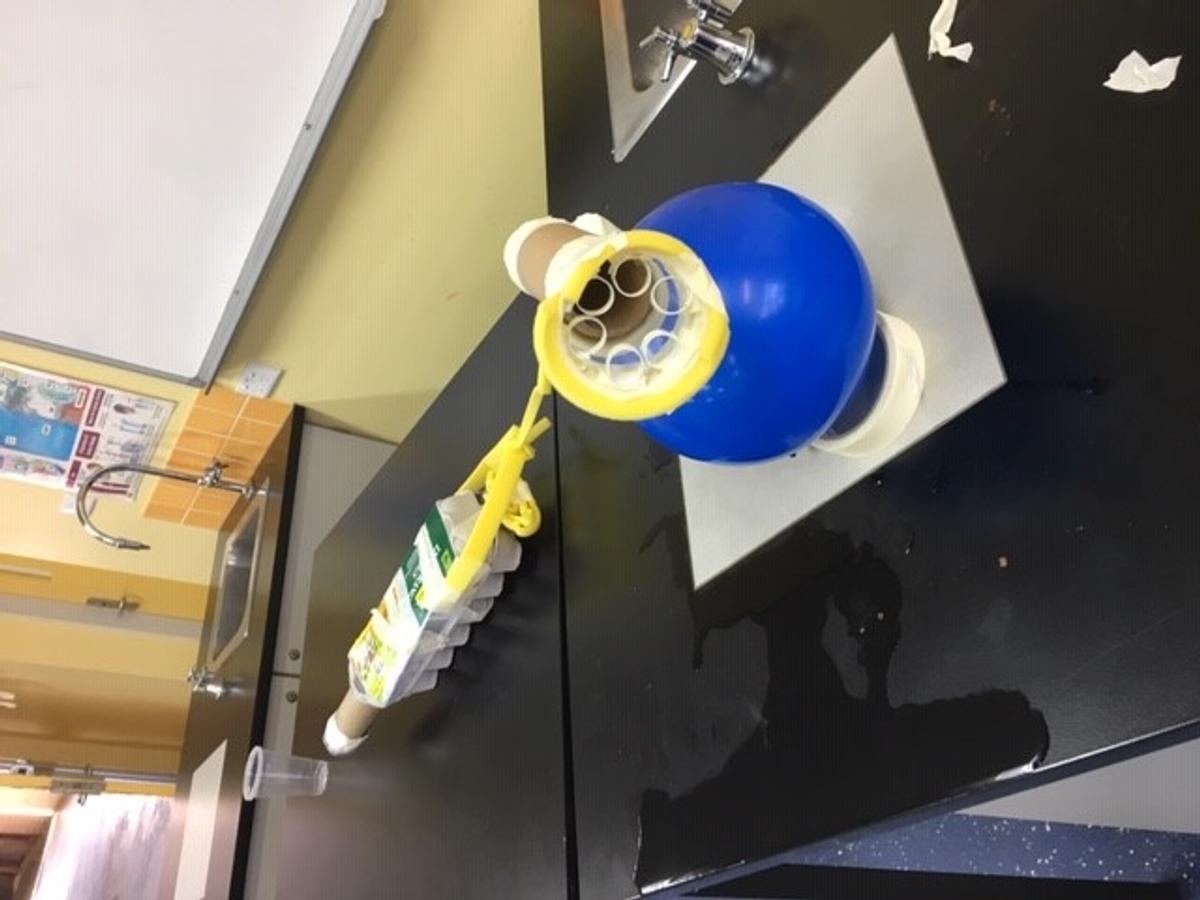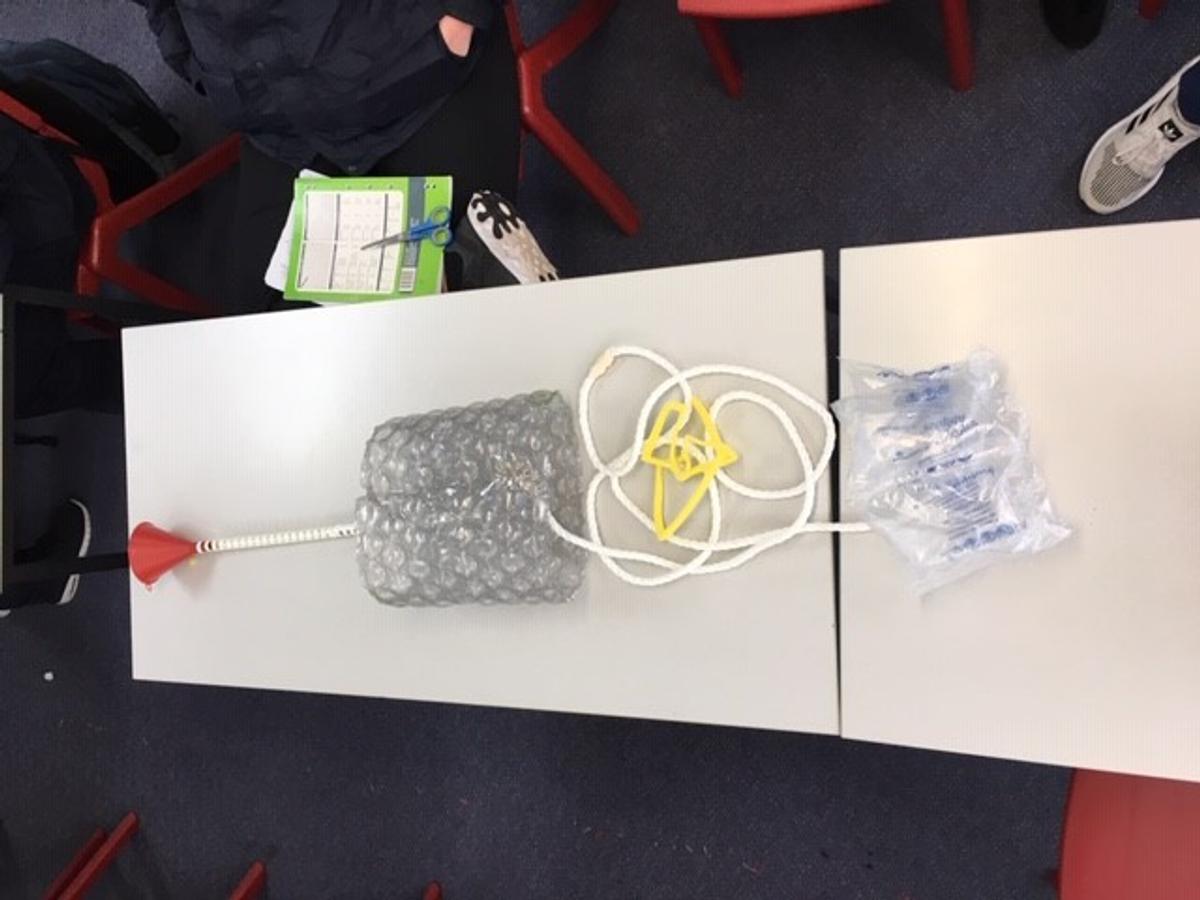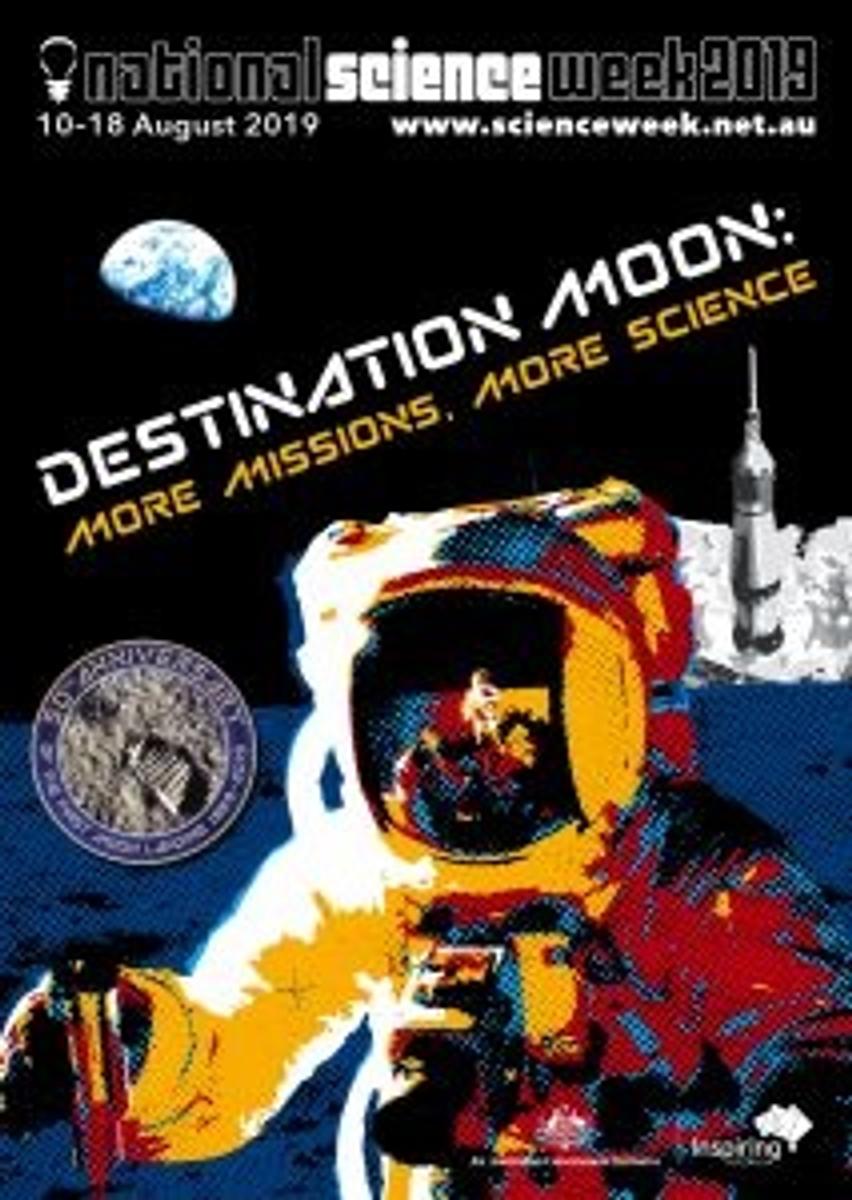Science News

Science
As part of the Donating Life (Body Works) program, Yr 8 students are learning about the digestive system. Students were provided with a large range of materials and challenged to construct a model digestive system, giving consideration to how the chosen material suits the function of the specific part of the digestive system. The students designed some very creative digestive systems and were able to explain why they used specific materials in their design. I especially liked Preston, Ryan and Tobias’ model that included hydrochloric acid in the stomach and formidable teeth in the mouth.
Ms Tammy Hancock
Science Teacher
Head Teacher Administration
Year 7 Science/STEM students have just wrapped up their latest project-based learning unit, in which they studied the Classification of Living Things. Students researched and created a vibrobot creature, as well as a creature feature card, that the class they used in a wider group task. It was a lot of fun creating the mini robots, and students learned about electric circuits in addition to the biology focus of the unit. Well done, Year 7!
Year 8 Science/STEM students have had a great time learning about chemistry and chemical reactions, especially since they were tasked with researching and conducting an experiment of their choosing! Students put so much effort into their work, and proudly presented their findings to classmates. Featured here is a presentation by Ryan Shepherd, who is explaining his project that involved the reaction that takes place in a smoke bomb. Well done, Year 8 – we are all very impressed with your efforts and proud of the great work you’ve done!
Year 8 has now moved into their next area of study, involving the human body and biomedical advances such as organ transplant. To acknowledge Organ Donation/DonateLife Week, students enjoyed a presentation by a transplant nurse from Wollongong Hospital and a local community member who received a life-saving liver transplant. Donate Life image
Featured here is a video by two Year 8 students who have constructed a model of the respiratory system and have written a script to explain how it works. We have been very pleased with the engagement of students in the newly developed STEM course – well done, once again!
Year 11 Biology students have been hard at work over the past term constructing a website to communicate the findings of their Depth Study, which focused on the organisation of living things. In this major project students researched the body systems across the different classifications of animals, in order to compare the requirements and systems of insects, fish, amphibians and mammals. The following website is the final compilation of their work. Please note that the site includes a number of photos of the dissections of the specimen; these are quite graphic in nature and may not appeal to all viewers!
https://sites.google.com/education.nsw.gov.au/lihs-biology-depth-study-2019/home
Week 4 (August 10-18) is NATIONAL SCIENCE WEEK! This year’s theme is ‘Operation Moon: More Missions, More Science’. To get involved we have been discussing the Apollo Moon landings with our students, and have investigated the false claim that the moon landings were a hoax through the examination of evidence as seen in the MythBusters NASA Moon Landing episode (you can find details here: https://www.space.com/5772-tv-mythbusters-tackle-moon-landing-hoax-claims.html).
Students were also given the opportunity to participate in science trivia and to engage with the story of three African-American women who were the brains behind getting the first American astronaut into orbit in viewing the amazing true story in movie Hidden Figures.
Year 7 students, who happen to be studying Space Science right now, will take their examination of the moon and space further by investigating the role the Moon plays in life on Earth as well as the differences between living on Earth and living in space, on the Moon or even on another planet! They will be challenged to consider how weightlessness and microgravity affect astronauts on space missions, including how astronauts:
- eat in space;
- wash their hair in space;
- sleep in space;
- brush their teeth in space;
- go to the toilet in space;
- exercise in space;
- stay healthy in space;
- collect information and data in space; and
- store their scientific equipment in space.
Check out Canadian astronaut Chris Hadfield, and others, on the Canadian Space Agency’s YouTube channel to learn more about life in space (https://www.youtube.com/user/Canadianspaceagency).
Ms K MCKinlay
Head Teacher Science




